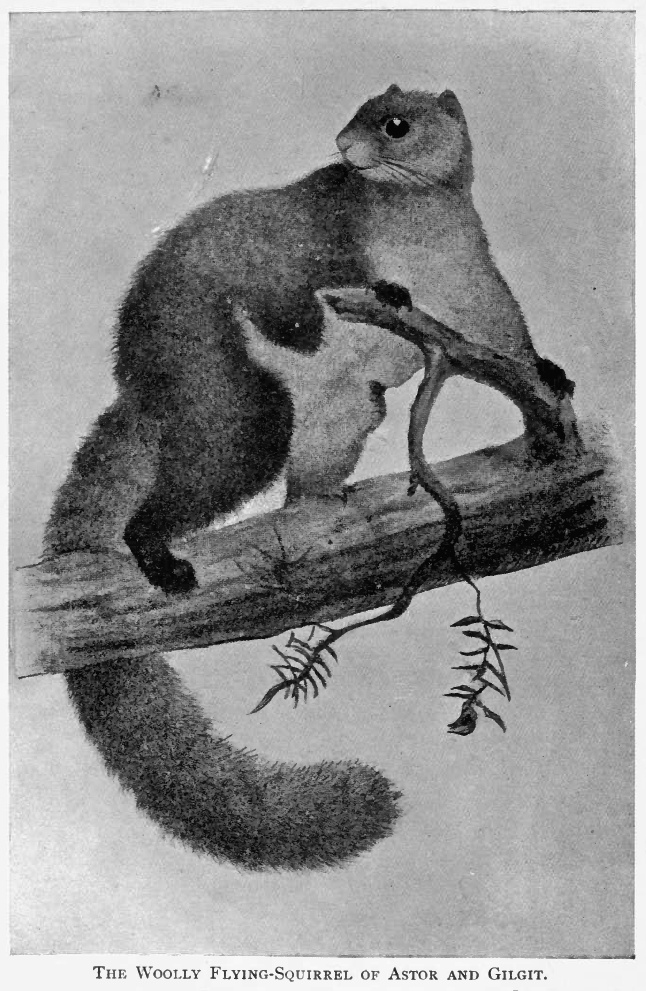- Woolly Flying Squirrel
Taxobox
name = Woolly Flying Squirrel
status = EN

trend = unknown
status_system = iucn2.3
fossil_range = Recent
regnum =Animal ia
phylum = Chordata
classis =Mammal ia
ordo =Rodent ia
familia =Sciuridae
tribus =Pteromyini
genus = "Eupetaurus"
genus_authority = Thomas, 1888
species = "E. cinereus"
binomial = "Eupetaurus cinereus"
binomial_authority = Thomas,1888 The Woolly Flying Squirrel ("Eupetaurus cinereus") is the sole species placed in the genus "Eupetaurus". Until recently scientific knowledge of this rare species was limited to 11 skins collected in the late nineteenth century. However, recent research has confirmed that it is still extant in
Pakistan iKashmir . It is the longest member of the familySciuridae and the most massive gliding animal known, but observations confirm that despite its size, it does glide effectively like otherflying squirrel s.Distribution and description
"Eupetaurus" has been recorded in northern Pakistan in the area around Gilgit. These areas include
Chitral ,Astor . Other specimens have been purchased from a bazaar inTibet , collected in Tibet, and collected inYunnan ,China . Since 1994, specimens have been captured in theSai Valley ,Gorabad , andBalti Gali , all in northern Pakistan (Zahler and Woods, 1997). The preferred habitat appears to be high elevation conifer forests associated with cliffs and caves.The Woolly Flying Squirrel is very large for a flying squirrel (head and body = 45-60 cm). The cheek teeth are unique as they are both flat-crowned and high crowned (hyposodont), setting "Eupetaurus" apart from other squirrels and suggesting that it feeds on very abrasive plant material (Zahler and Woods, 1997). The animal has a woolly pelage, thus the name.
Relationships
The woolly flying squirrel is unique among the flying squirrels. This is particularly true of its large size and its unique dentition. This led a few early researchers to go so far as to create a distinct family. Some of their arguments were based on poorly drawn and labeled diagrams of the
cranium andlower jaw . Zahler and Woods (1997) suggest instead that "Eupetaurus" is closely related to another genus of large flying squirrels",Petaurista ".References
* Listed as Endangered (EN A2ce, B1+2cd, C2a v2.3)
*Zahler, P. (1996). Rediscovery of the woolly flying squirrel ("Eupetaurus cinereus"). "Journal of Mammalogy" 77: 54-57.
*Zahler, P. (2001). The woolly flying squirrel and gliding: does size matter? "Acta Theriologica" 46: 429-435.
*Zahler, P. and C. A. Woods. (1997). The status of the woolly flying squirrel ("Eupetaurus cinereus") in Northern Pakistan. Pp 495-514 in "Biodiversity of Pakistan" (S. A. Mufti, C. A, Woods, and S. A. Hasan eds.). Pakistan Museum of Natural History, Islamabad.
Wikimedia Foundation. 2010.
